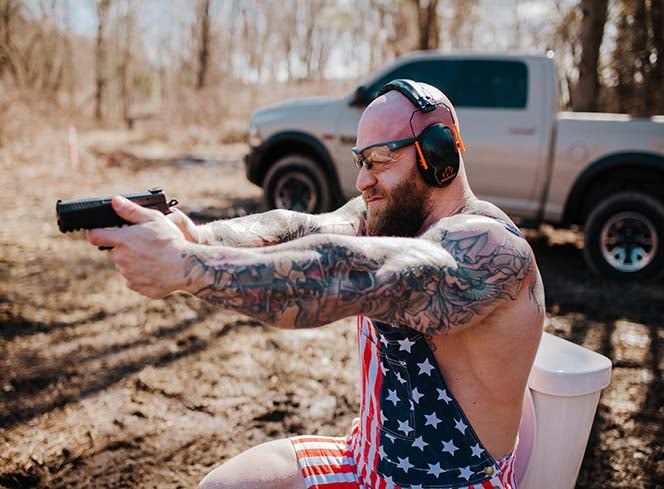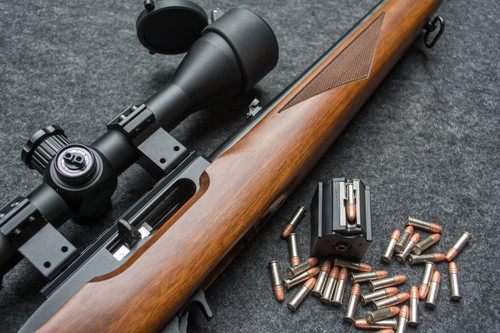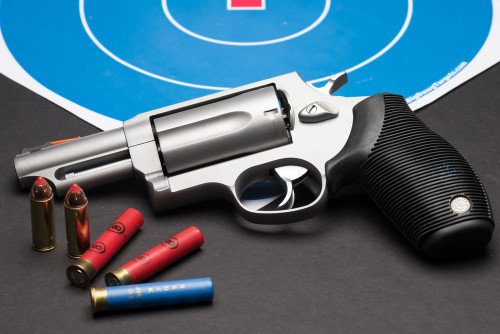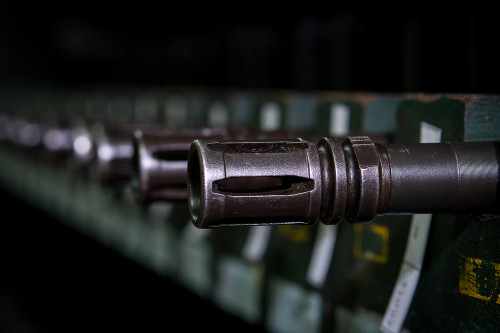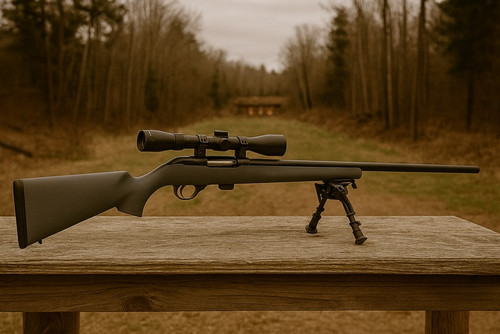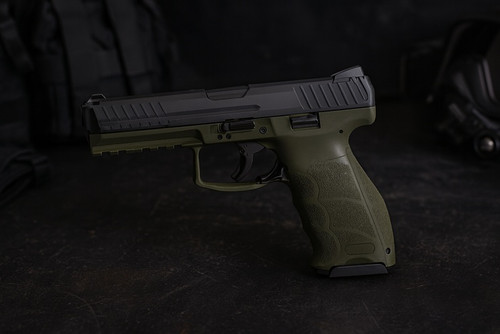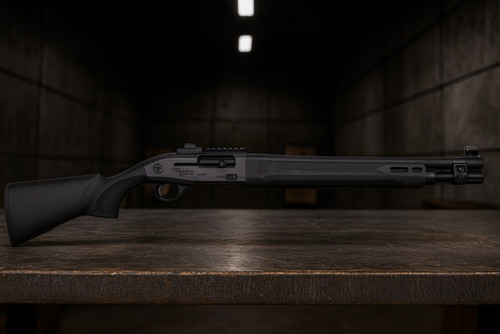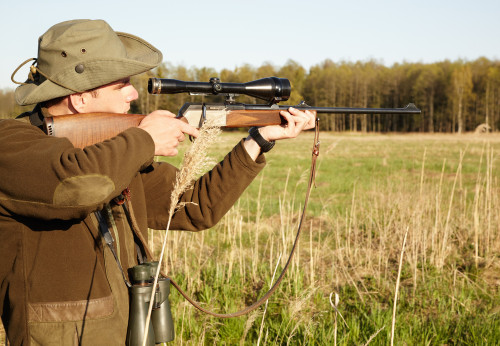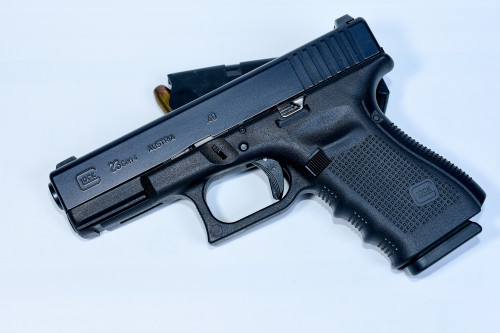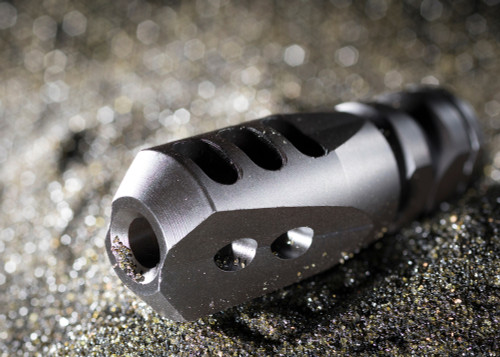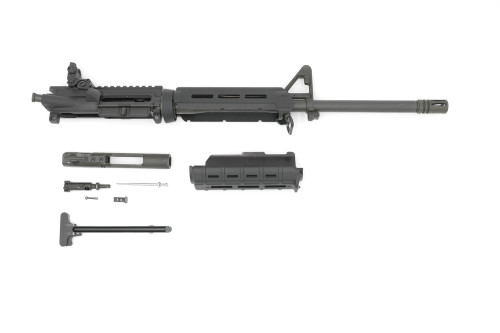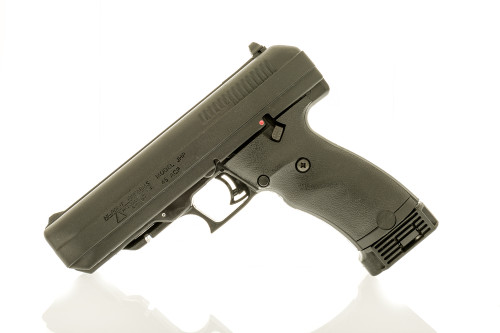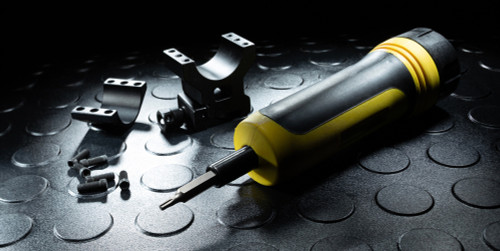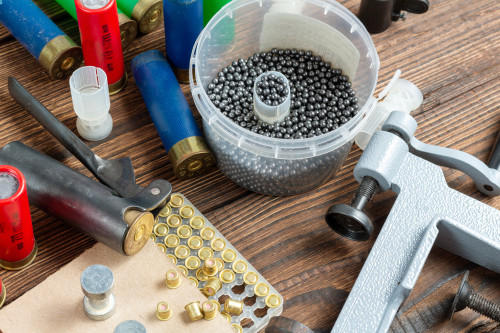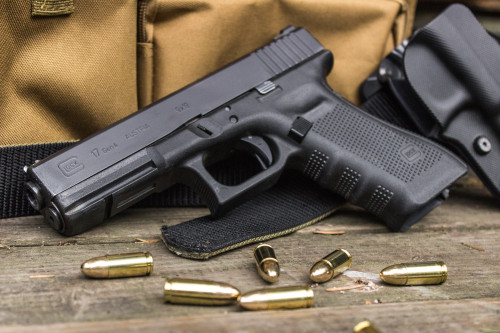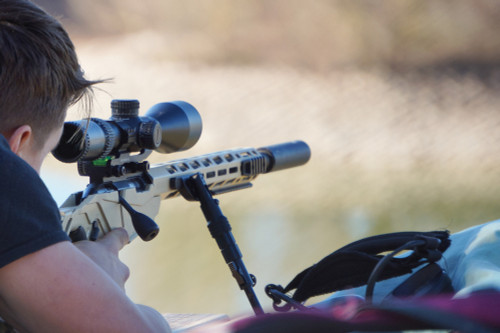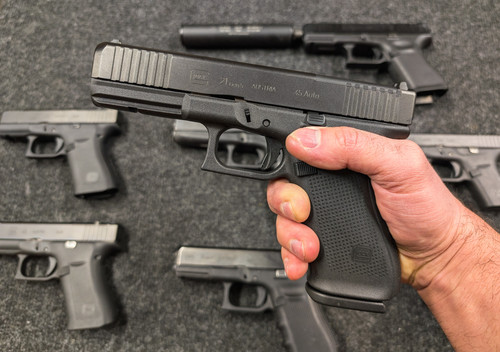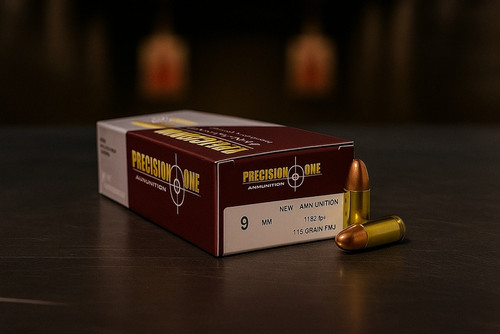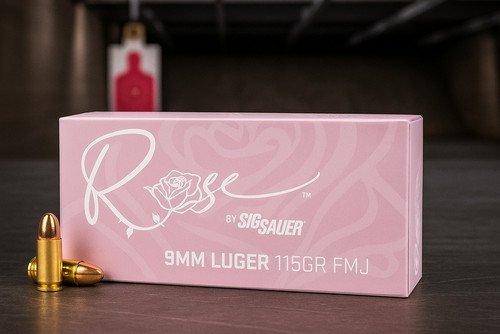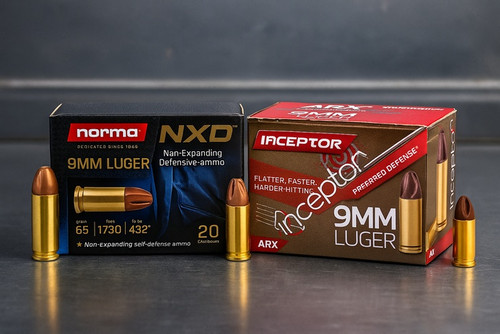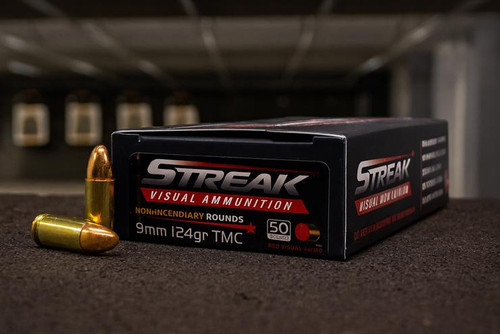Quick Answer
Straight-wall cartridges give deer hunters a legal rifle option in many shotgun-zone states. Top picks include .350 Legend, .450 Bushmaster, .45-70, .360 Buckhammer, .44 Magnum, .444 Marlin, and .38-55. Rules vary by state. Most set case length limits and minimum caliber. Always check your state DNR page before the season.
Key Takeaways
- Many Midwest states now allow straight-wall rifles
- Case length and caliber rules drive legality
- .350 Legend and .450 Bushmaster lead the pack
- Lever guns and AR-15 builds both work
- Performance varies by load, barrel, and bullet.
- Typical effective ranges for many straight-wall hunting loads fall in the 150–250 yard window, depending on cartridge, bullet weight, and barrel length. Confirm trajectory and terminal performance for your specific load and zero.
- Verify the latest regs before you go
Straight-wall cartridges are changing deer hunting in the Midwest. For decades, hunters in shotgun zones made do with slugs that lobbed like softballs past 100 yards. Now, states are opening the door to rifles—but only certain ones. The catch? Straight-wall cases only. No bottlenecks allowed.
That one rule has sparked a rifle and ammo revolution. Old classics like the .45-70 are back on racks. New rounds like the .350 Legend are leaving fast. And yes, shelves feel empty some days.
If you hunt in Ohio, Michigan, Indiana, Iowa, or Illinois, you need the basics. Know what makes a straight-wall. Know which rounds work well. And know what your state allows. Let’s keep it simple and clear.
Regulatory note (updated 2025): Multiple states updated deer-rifle rules between 2022 and 2025 (for example, Illinois added certain single-shot centerfire rifles in 2023; Indiana changed rifle rules in 2025). Always confirm the current season’s DNR digest before buying gear or heading out.
What Counts as a Straight-Wall Cartridge?
A straight-wall cartridge has a case that runs straight, or with a slight taper. No shoulder. No bottleneck. Just a simple tube design that dates to the black-powder era of the 1870s.
Back then, brass was harder to form into complex shapes. Straight walls were easier. Rounds like the .45-70 Government and .45 Colt ruled the frontier. They ran in single-shots, lever guns, and revolvers.
Fast forward to today. Bottleneck cartridges took over for most hunting because they fly faster and flatter. But straight-walls are making a comeback. Many states now allow them in zones that used to be shotgun-only.
Why do many states allow straight-walls and not modern bottleneck rounds? Range control. The Congressional Sportsmen’s Foundation notes that straight-wall rounds tend to have lower speed and less risk of over-penetration in crowded areas, which boosts safety in tight hunting zones. Many states add case length and caliber rules to hold that safety line.
Straight-wall bullets slow down faster. They drop sooner. That creates a practical range ceiling around 200 yards for most loads. For Midwest deer hunting in thick cover, that's plenty.
Always match your ammo to your rifle. Check the barrel stamp. Read your owner's manual. Mixing up cartridges can damage your gun or hurt you.
Best Straight-Wall Cartridges
.350 Legend
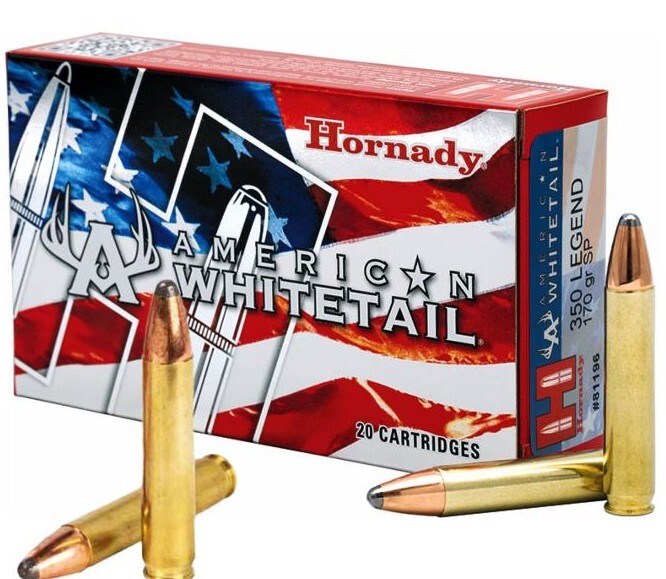
Models: Ruger American Ranch .350 Legend, Winchester XPR .350 Legend, Savage Axis II .350 Legend
Winchester introduced the .350 Legend at SHOT Show 2019, and it was standardized by SAAMI the same year. It has become widely accepted for straight-wall seasons and is explicitly referenced as permitted in some state regulations. Always verify your state’s permitted calibers.
This round drives 145 to 180 grain bullets at speeds fit for clean deer kills inside 200 yards. Recoil stays light—less than a .243 Winchester in many rifles. That makes it a smart pick for new hunters, young hunters, or anyone who does not want a hard punch to the shoulder.
Factory ammo comes in a wide range. You can find hunting loads with bonded bullets, copper solids, and soft-points. Some companies even offer subsonic options for suppressed hunting. Bolt guns shoot it well. AR builds cycle it smoothly. For a round this new, support from rifle and ammo makers has been outstanding.
Price: Rifle $400–$700 | Ammo $20–$35 per box
Features
- Works in AR-15 and bolt-action platforms
- Common bullet weights: 145–180 grains
- Good penetration for whitetail-sized game
- Subsonic and supersonic load options
Pros
- Low recoil allows fast follow-up shots
- Ammo widely available at most sporting goods stores
- Budget-friendly rifles shoot tight groups
- Legal in most straight-wall states
Cons
- Not built for long-range shooting
- Lighter bullets may struggle on quartering shots
- Subsonic loads require careful zero work
.45-70 Government
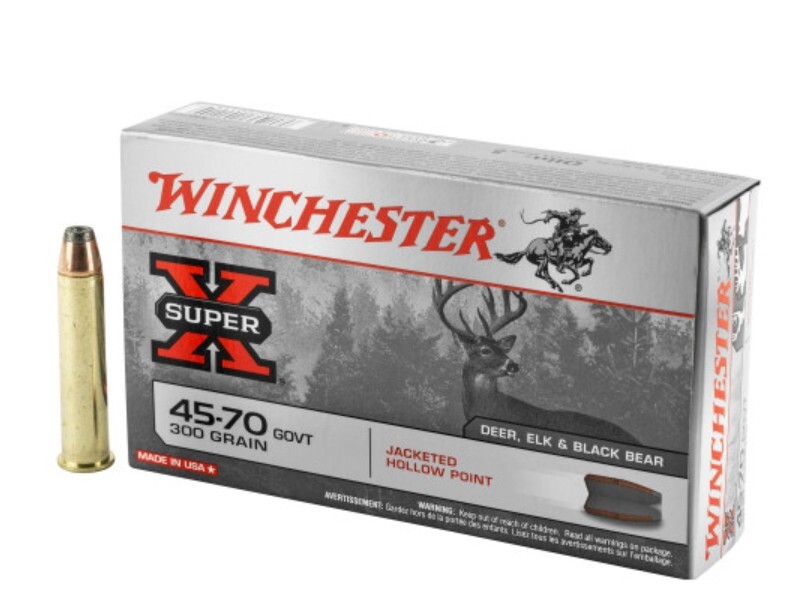
Models: Henry .45-70 Case Hardened, Marlin 1895 SBL, Ruger No.1 .45-70
The .45-70 Government goes back to 1873. It started as a military round in the Springfield Trapdoor. In time, it became a go-to choice in thick woods for big animals.
This round throws heavy bullets, from 300 to 405 grains and more, at steady speeds. The result is deep drive and strong on-game effect for deer, elk, bear, and moose. Heavier bullets also tend to cut through brush better than light, fast ones.
Modern ammo gave the .45-70 fresh life. Hornady’s LEVERevolution uses flex-tip bullets that are safe in tube mags and fly flatter than old round-nose loads. But mind your pressures if you shoot an old rifle. Vintage guns are not built for modern +P loads. Use standard pressure loads to protect the gun.
Price: Rifle $600–$1,200 | Ammo $35–$55 per box
Features
- Bullet weights from 300–405+ grains
- Deep penetration on big-bodied deer
- Wide ammo selection from mild cowboy loads to hot hunting rounds
- Iconic lever-gun feel
Pros
- Drops game fast without wasting meat
- Works on elk and bear at close range
- Classic lever-action handling
- Modern loads improve trajectory
Cons
- Recoil can be stout in lightweight rifles
- Trajectory drops fast past 200 yards
- Fewer new rifle models than modern cartridges
- Case length exceeds limits in some states
.450 Bushmaster
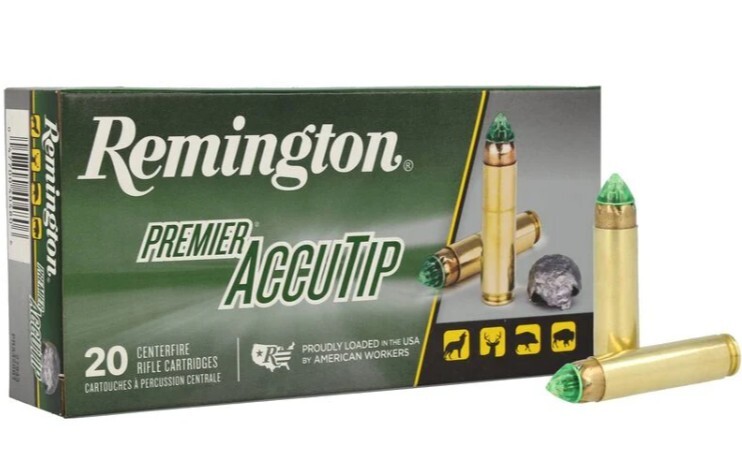
Models: Ruger American Ranch .450 BM, Savage 110 .450 BM, Bushmaster .450 AR
The .450 Bushmaster arrived in 2007. Tim LeGendre designed it and licensed it to Bushmaster Firearms. The goal was simple. Build a big-bore round that runs well in semi-automatic AR-15 rifles.
It sends 250 to 300 grain bullets with real force. Inside 200 yards, it hits deer like a freight train. Exit holes are large. Blood trails stay short. Most deer drop within sight of the stand.
People who run AR-15s like the .450 Bushmaster. You use the same lower as a .223/5.56 rifle. Swap the upper, load good magazines, and go hunt. Bolt guns also chamber it. Either platform delivers one-shot kills when you do your part. Just know that close shots can damage more meat than milder cartridges. Aim carefully and you'll fill the freezer.
Price: Rifle $500–$900 | Ammo $30–$50 per box
Features
- Big-bore power in an AR-15 package
- Bullet weights: 250–300+ grains
- Effective to 200 yards on deer
- Works with red dots or low-power variable optics
Pros
- Simple AR-15 build path
- Excellent terminal results with bonded bullets
- Cycles smoothly in gas guns
- Great for thick cover and short shots
Cons
- Meat damage at very close range
- Recoil sharper than .350 Legend
- Ammo cost higher than mid-bore cartridges
- Mag capacity rules vary by state
.38-55 Winchester
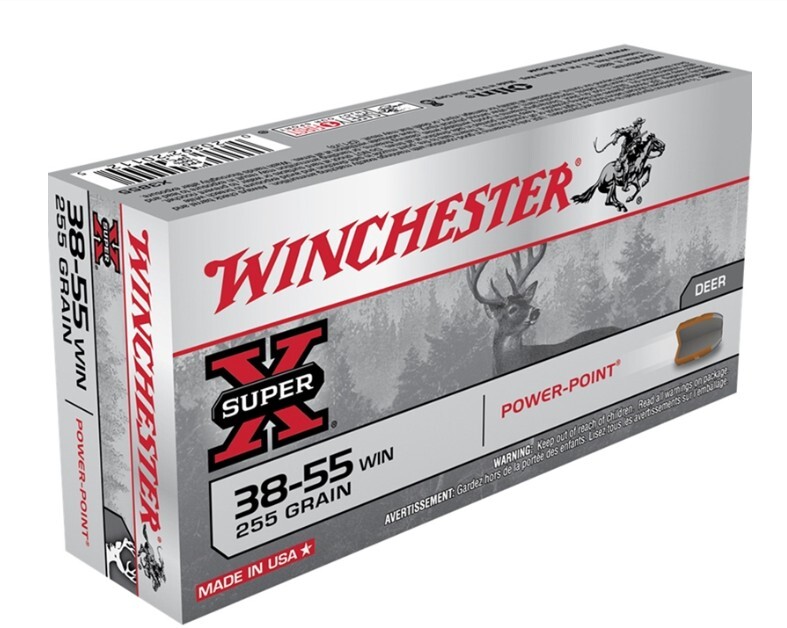
Models: Henry Single-Shot H015-38-55, Winchester Model 94 .38-55 (legacy and limited runs)
The .38-55 Winchester hit the market in 1876. It started as a black-powder target and hunting round. Many liked its soft push and steady groups of deer at modest range.
Winchester updated it in 1978 with smokeless powder loads. Modern rounds push 235 to 255 grain bullets at speeds that work well on whitetails inside 150 yards. Recoil stays light next to the big bores, and good rifles shoot it straight.
Finding a new rifle in .38-55 can be hard. Production runs are small and often limited. Your best bet might be a used lever-action or a Henry single-shot. If you do locate one, grab some proper hunting ammo—not cowboy action loads. The light target loads are fun at the range but lack the punch for clean deer kills.
Price: Rifle $600–$1,000+ | Ammo $35–$50 per box
Features
- Bullet weights: 235–255 grains
- Modern smokeless powder loads available
- Mild report and recoil
- Classic lever-action appeal
Pros
- Easy to shoot accurately off field rests
- Gentle on the shoulder
- Meat-friendly bullet performance
- Heritage appeal for collectors and traditionalists
Cons
- Rifle availability is spotty
- Cowboy loads not suitable for hunting
- Limited modern ammo options
- Short effective range compared to newer rounds
.50 Beowulf
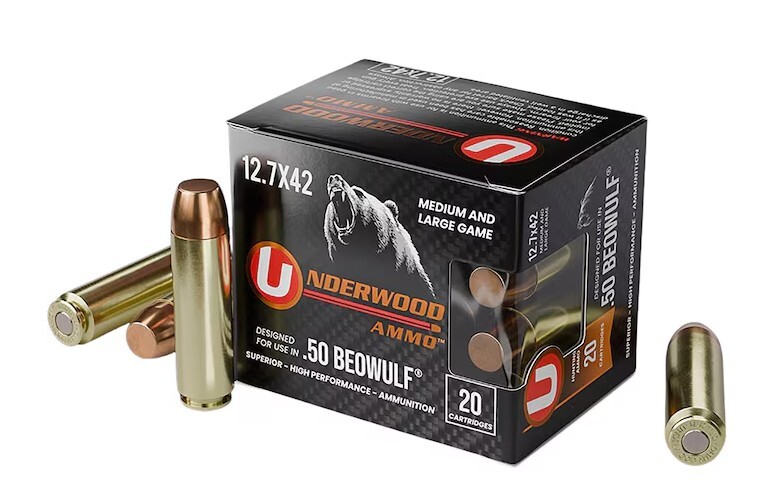
Models: Alexander Arms .50 Beowulf AR-15
The .50 Beowulf was born in the tactical world. Bill Alexander designed it to punch through car doors, engine blocks, and barriers. It's the largest cartridge you can stuff into a standard AR-15 without major modifications.
Hunters discovered it works great on game too. Bullet weights run from 300 to 400+ grains. The frontal area is massive. Inside 150 to 175 yards, it hits deer and hogs with devastating force. Blood trails are easy to follow. Most animals don't travel far.
This round demands respect. Recoil is stout. Ammo costs more than most straight-walls. And you need to pay close attention to your backstop because these heavy bullets carry serious energy. If you hunt thick cover and want absolute authority at short range, the .50 Beowulf delivers. Just understand it's a niche pick for specialized situations.
Price: Rifle $1,000–$1,500 | Ammo $45–$65 per box
Features
- Bullet weights: 300–400+ grains
- Massive wound channels and quick blood trails
- Uses specific mags and AR parts
- Built for barrier penetration and big game
Pros
- Serious short-range knockdown power
- Unique AR-15 setup for heavy cover
- Simple optics pairings
- Works on any North American big game at close range
Cons
- Steep ammo cost limits practice
- Noticeable recoil
- Limited rifle manufacturers
- Range ceiling lower than mid-bore cartridges
.444 Marlin

Models: Marlin 444 (legacy/used market), select custom builds and limited production runs
The .444 Marlin launched in 1964. At the time it was the most powerful lever-action round. Marlin stretched the .44 Magnum case and used heavier bullets. The result was a hard-hitting woods round for deer and bigger game.
Bullet weights run from 240 to 300 grains. Modern loads from makers like Hornady push them fast. Trajectory stays friendly to 150 yards and can reach 200. High sectional density helps drive deep on big-bodied deer.
Unfortunately, finding a new rifle chambered in .444 Marlin can be tough. Production has been limited for years. Your best shot is the used market or a custom build. If you can locate one and pair it with modern ammo, you've got a capable timber rifle that hits harder than most straight-walls. Expect some recoil in lighter guns—this one pushes back.
Price: Rifle $700–$1,200+ (used/custom) | Ammo $40–$60 per box
Features
- Bullet weights: 240–300 grains
- High sectional density for deep penetration
- Works well with low-power scopes
- Classic lever-action platform
Pros
- Confident hits on big-bodied deer
- Classic lever handling and aesthetics
- Modern propellants improve trajectory
- Effective in timber and cutover areas
Cons
- Few new rifles on store shelves
- Ammo availability can be seasonal
- Recoil noticeable in lightweight guns
- Case length exceeds limits in some states
.44 Magnum (Carbine/Rifle)
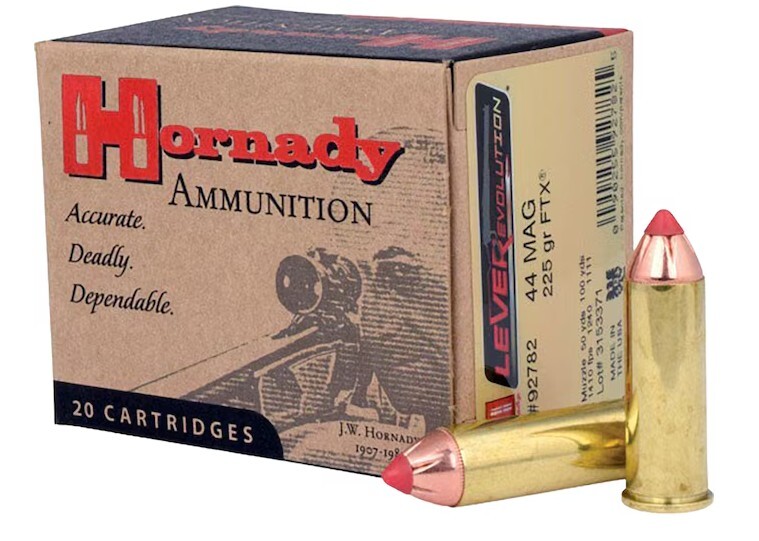
Models: Marlin 1894 Classic .44 Mag, Henry Big Boy X .44 Mag
Many hear .44 Magnum and picture Dirty Harry. In a carbine or rifle, this round really shines. A longer barrel adds speed. Recoil feels mild next to a revolver.
Bullet weights range from 180 to 300 grains. Light bullets are fine for practice and small game. Heavier hunting bullets give clean kills on deer inside 125 to 150 yards. Short lever carbines handle well in blinds and tight stands.
Ammo is easy to find and priced fair. You can train with bulk loads. Then switch to premium hunting bullets when the season starts. Pick bullets that expand on deer. Full metal jacket or hard-cast target loads do not expand well and can give weak blood trails and lost animals.
Price: Rifle $600–$1,000 | Ammo $25–$40 per box
Features
- Bullet weights: 180–300 grains
- Fast follow-ups with lever-actions
- Good performance to ~125–150 yards
- Compact carbines for tight spaces
Pros
- Mild recoil and muzzle blast
- Common ammo at most stores
- Great for new hunters
- Affordable practice with bulk loads
Cons
- Range ceiling lower than .350 or .450
- Bullet selection matters for penetration
- Some rifles need load testing for best accuracy
- Not ideal for long shots
.360 Buckhammer
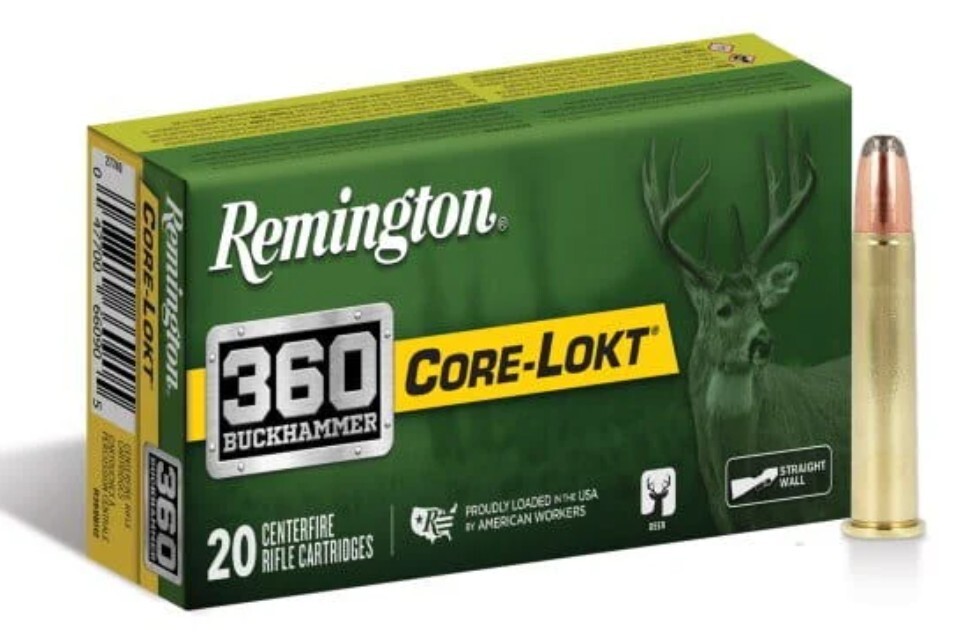
Models: Henry Lever Action .360 Buckhammer (H009 series), Henry Single-Shot H015-360, CVA Scout V2 .360
The .360 Buckhammer is a modern straight-wall cartridge introduced commercially in the early 2020s, with broad ammo and rifle support rolling out in 2023–2024 as major manufacturers added loads and factory rifles.
It sits between the .350 Legend and the big-bore bruisers in terms of power and recoil.
This round pushes 180- to 200-grain bullets at speeds that produce solid terminal performance on whitetails inside 200 yards. It cycles smoothly in lever-actions and delivers manageable recoil for most hunters. Bonded bullets hold together well on angled shots and offer good penetration.
Because it's so new, ammo selection is still growing. You won't find as many factory loads as you will for the .350 Legend or .45-70. Rifle options are also limited compared to more established cartridges. But early reports from hunters who've used it on deer are positive. Expect this round to gain traction as more manufacturers support it.
Price: Rifle $700–$1,100 | Ammo $30–$45 per box
Features
- Bullet weights: 180–200+ grains
- Case length fits 1.8-inch state rules
- Lever-action ergonomics
- Clear performance inside 200 yards
Pros
- Legal in key Midwest straight-wall zones
- Smooth cycling in lever rifles
- Balanced power and shootability
- Modern design built for hunting regulations
Cons
- Newer ammo lineups still expanding
- Limited rifle models compared to .350 Legend
- Less real-world feedback than established rounds
- May need fresh zero checks across ammo lots
Why Straight-Wall Over Slugs or Muzzleloaders?
For decades, hunters in shotgun zones had two choices: slug guns or muzzleloaders. Both work, but they come with downsides.
Smoothbore shotguns firing slugs are accurate to maybe 75 or 100 yards on a good day. Rifled slug barrels push that out to 150 yards if you do your part. But even then, drop and drift can be unpredictable. Follow-up shots are slow. And recoil from a 12-gauge slug can rattle your teeth.
Muzzleloaders offer better accuracy and range. Modern inline designs can deliver ethical kills out to 200 yards or more. But reloading takes time. If your first shot misses or just wounds the deer, you're out of the hunt until you can swab, load, cap, and prime again. That's not ideal when a wounded animal is bounding away.
Straight-wall rifles split the difference. They shoot more accurately than most slug guns. Recoil is often lighter. And you get fast follow-up shots from a magazine. That combination makes straight-walls attractive for hunters who've been stuck with slugs for years.
Keep your shots inside typical ranges. For most straight-wall cartridges, that means 150 to 200 yards. Past that, bullet drop accelerates and energy fades. Practice at the ranges you'll actually shoot. Know your holds. And only take high-percentage angles on game.
State-by-State Legality
Important! Rules change. New laws pass. Agencies update regulations. Always check your state's Department of Natural Resources website before you buy gear or head to the woods. What's legal this year might shift next season.
Here's a snapshot of the major Midwest states that allow straight-wall cartridges. Use this as a starting point, not your final word.
Midwest Core
Ohio
Straight-walled cartridge rifles from .357 to .50 caliber are legal. Shotguns and straight-walled cartridge rifles may be loaded with no more than three shells in the chamber and magazine combined. Verify any local or season-specific exceptions with the Ohio DNR.
Michigan (Limited Firearms Zone)
Allows straight-wall cartridges .35 caliber or larger with case length from 1.16" to 1.80". This applies to the Limited Firearms Zone in the southern Lower Peninsula. Semi-automatic magazine-capacity limits apply per season rules. Check the zone map and the current hunting digest.
Indiana (UPDATED 2025)
Important: Indiana’s rules changed in 2025. For hunting seasons beginning after June 30, 2025, the state removed the former case-length restrictions and authorized the use of rifles on public property subject to specific statutory restrictions. The previous 1.16–1.80" public-land window is no longer the statewide limit. Always check the Indiana DNR and the current statute for the exact equipment and season rules that apply to the land you plan to hunt.
Iowa
Iowa allows certain straight-walled and other centerfire cartridges for deer when they meet the state’s specs: an expanding-type bullet with a diameter no less than .350" and no greater than .500". Case-length windows apply and differ for rimless vs. rimmed handgun-type cartridges. Review the current DNR rules and administrative guidance and confirm any grandfathered exceptions before you hunt.
Illinois
Effective January 1, 2023, Illinois allows centerfire single-shot rifles for deer hunting in specified calibers and case lengths under administrative rules. The DNR explains permitted cartridges and the single-shot requirement, including restrictions on possessing detachable magazines during the hunt. Check the current season guide and FAQs for exact specs.
Other Regions
Other regions — use caution
A few states have historically restricted rifle cartridges for deer (for example, longstanding shotgun-only areas). Minnesota has considered 2025 legislation to expand straight-wall use, and other states periodically update rules. Avoid absolute claims; always verify the current DNR guidance and the enabling statute for the specific area you plan to hunt.
| State | Min Cal | Case Length Rule | Example Legal Rounds | Capacity Notes | DNR Link |
|---|---|---|---|---|---|
| Ohio | .357 | No limit | .350 Legend, .450 Bushmaster, .44 Magnum, .50 Beowulf | ≤3 rounds total | Check DNR |
| Michigan | .35 | 1.16–1.80 in (Limited Firearms Zone) | .350 Legend, .360 Buckhammer, .450 Bushmaster | Semi-auto ≤5 rounds | Check DNR |
| Indiana (2025+) | Per statute / DNR | Former 1.80 in cap no longer controlling | Check current DNR list | Per DNR | Check DNR |
| Iowa | .350 | Varies (rimmed vs rimless straight-walls) | .450 Bushmaster, .454 Casull, other straight-walls | Per DNR | Check DNR |
| Illinois | Per DNR | Per DNR | Centerfire straight-walls meeting specifications | Single-shot only with admin requirements | Check DNR |
How to Choose Your Straight-Wall Setup
First step: find out what's legal in your hunting zone. Pull up your state DNR website. Read the regulations. Write down the caliber and case length limits.
Next, pick a cartridge that fits those rules. If your state allows .35 caliber and up with a 1.8-inch case limit, the .350 Legend, .360 Buckhammer, and .450 Bushmaster all work. If there's no case length limit, you can add the .45-70 and .444 Marlin to the list.
Now choose your platform. Do you want a lever-action for that classic feel? Or an AR-15 for modularity and fast follow-ups? Maybe a bolt gun for simplicity and accuracy? All three work. Pick the one that fits your hunting style.
Zero your rifle for your real-world range. Most hunters shoot deer inside 150 yards. Zero at 100 yards and learn your drop at 150. Confirm it with your exact load. Different bullet weights and brands will shoot to different points of impact.
Run a three-round accuracy check from field rests. Use shooting sticks, a backpack, or a tree limb. Don't shoot from a bench and expect the same results in the woods. Practice the way you'll hunt.
Before opening day, run through this five-point checklist:
- Ammo matches barrel stamp
- Scope mounts and action screws torqued
- Optic holds zero after a few rounds
- Magazine capacity meets state rules
- Printed copy of regs in your pack
That simple checklist prevents most field problems.
Field Performance Tips
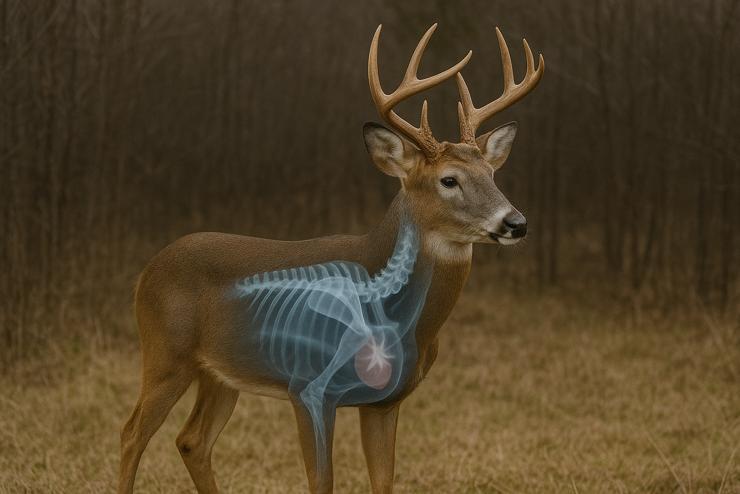
Straight-walls work best at modest ranges on high-percentage angles. Quartering-away and broadside shots give you the best odds. Straight-on or hard-quartering shots can be tricky with lighter bullets.
Bullet choice matters. Bonded bullets hold together on bone and angled shots. Copper solids penetrate deep without fragmenting. Soft-points expand reliably at moderate speeds. Match your bullet to your cartridge and shot distance.
Big-bore rounds such as the .45-70 or .450 Bushmaster can damage meat at close range. If you are inside 50 yards, aim with care. A high shoulder shot drops the deer fast and can waste less meat than a point-blank lung shot.
Train with your exact hunting load at 50, 100, and 150 yards. Learn your hold for each mark. Don’t guess. Confirm your impact on paper or steel before the season.
Straight-Wall Revival: How We Got Here
Straight-wall cartridges reach back to the black-powder days. Makers in the 1870s found straight cases easier to build than bottlenecks. Rounds like the .45-70 Government and .45 Colt ruled the frontier.
As technology improved, bottleneck cartridges took over. They flew faster and flatter. Straight-walls faded into the background for nearly a century.
Then states started looking for alternatives to shotgun-only seasons. Biologists and lawmakers wanted something safer than high-velocity magnums but more effective than slugs. Straight-walls fit the bill.
Manufacturers responded. Winchester built the .350 Legend specifically to meet state case-length rules. Remington followed with the .360 Buckhammer. Ammo companies loaded modern bullets in old classics like the .45-70 and .444 Marlin.
Hunter demand drove the market. Rifle makers added straight-wall chambers to lever-actions, bolt guns, and AR-15 uppers. Ammo flew off shelves. The straight-wall revival was on.
Legal and Safety Notes
Laws shift fast in this space. A cartridge that's legal this year might not be next season. New rules pass. Agencies adjust definitions. Always verify current regulations on your state DNR website before you buy a rifle or ammo.
Capacity rules vary. Some states limit total rounds to three. Others set magazine limits for semi-autos. Know what applies to your gun.
Public vs. private land rules can differ. Indiana allows more cartridges on private ground. Iowa has special antlerless seasons with different rules. Read the fine print.
Zone maps matter too. Michigan's Limited Firearms Zone has different rules than the rest of the state. Make sure you know which zone you're hunting.
Transport and tagging rules apply just like any other deer season. Unload your rifle before you put it in the truck. Tag your deer immediately after the kill. Follow all game laws.
HowTo Check Your State's Rules in 5 Steps
First, open your state DNR deer hunting page. Most states have a dedicated section for firearm regulations.
Second, find the firearm or rifle section. Look for straight-wall cartridge rules. Note any caliber and case length limits.
Third, match your cartridge to those limits. Write down the specs for the round you want to use. Compare them to the state rules.
Fourth, check capacity and land-type rules. Some states limit rounds in the rifle. Others have different rules for public and private land.
Fifth, print a copy of the regulations and keep it in your pack. Rules change. Having a printed copy dated for the current season covers you if questions come up in the field.
Conclusion
Straight-wall cartridges give deer hunters a strong option in states once limited to slugs and muzzleloaders. The .350 Legend and .450 Bushmaster lead many modern AR-15 and bolt-gun builds. Classic rounds such as the .45-70 Government and .444 Marlin still shine in lever guns for that old-school feel.
Rules vary by state. Case length limits, caliber windows, and capacity restrictions all play a role. Check your DNR website before you commit to a rifle or cartridge. What works in Ohio might not fly in Michigan or Iowa.
Pick a cartridge that's legal in your zone, fits your rifle platform, and matches your hunting style. Zero it for realistic ranges. Practice from field positions. Keep your shots inside 150 to 200 yards. Do that, and you'll fill your tag and your freezer.
One more thing: Experts note that many time-tested straight-wall cartridges do possess heavy recoil because they fire super-heavy bullets at high velocities. It delivers serious knockdown power on game but also a substantial kick on your shoulder.
If recoil bothers you, lean toward the .350 Legend or .360 Buckhammer. If you want maximum authority in thick cover and don't mind the push, the big bores deliver.
Now get out there and hunt.
Straight-wall cartridges have become a go-to option for hunters in states with caliber restrictions, offering plenty of knockdown power inside practical ranges. If you want to see how they stack up against other big-game calibers, check out our Best Big Game Calibers guide.

REMINGTON 360 BUCKHAMMER 180GR CL SP 20/200
$30.48
at Pro Armory
Prices accurate at time of writing
Frequently Asked Questions (FAQ)
What is a straight-wall cartridge?
A straight-wall cartridge has a case that runs straight or tapers slightly, with no shoulder or bottleneck. Examples include the .45-70 Government, .350 Legend, and .450 Bushmaster.
Are straight-wall rifles legal for deer in my state?
Many Midwest states now allow them. Ohio, Michigan, Indiana, Iowa, and Illinois all have straight-wall seasons. Rules vary by state. Check your DNR website for current regulations.
Is .350 Legend better than .450 Bushmaster for deer?
Both work. The .350 Legend has less recoil and is easier to shoot. The .450 Bushmaster hits harder at close range. Pick based on your shooting style and tolerance for recoil.
Can I use an AR-15 with straight-wall ammo?
Yes. The .350 Legend, .450 Bushmaster, and .50 Beowulf all work in AR-15 platforms. Just swap the upper and use the correct magazines. Some states limit capacity, so check local rules.
What case length limits apply in 1.8-inch states?
States like Michigan and Indiana set a maximum case length of 1.8 inches. The .350 Legend, .360 Buckhammer, and .450 Bushmaster fit. The .45-70 Government and .444 Marlin exceed that limit in those states.
About the Author
This article comes from the ProArmory writing team and current research. We drew from sources such as the Journal of Military Science, Firearms News, and the National Shooting Sports Foundation. We also used official defense publications and trusted firearm authorities, including the ATF, NRA, and manufacturer manuals.
Disclaimer: This article is for education only. It is not legal advice. Hunting laws and firearm rules vary by state, county, and zone. Always check your local Department of Natural Resources or wildlife agency site for current rules before you buy firearms or ammunition.




 Pro Armory Editorial Team
Pro Armory Editorial Team